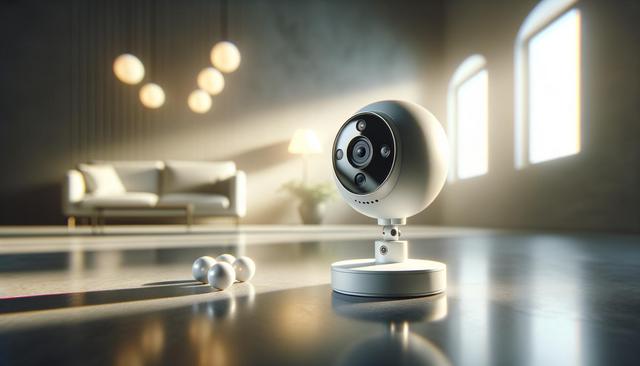Exploring the Versatility of Tiny Security Cameras
Tiny security cameras are becoming an increasingly popular choice for discreet surveillance at home and in professional settings.

Understanding the Appeal of Tiny Security Cameras
As technology continues to advance, security solutions have become more compact without compromising functionality. Tiny security cameras are a prime example of this evolution. These devices offer a discreet way to monitor environments, blending seamlessly into various settings. Unlike traditional, bulky surveillance systems, these miniature cameras can be installed in locations where space is limited or where visibility needs to be minimal. Their small size makes them particularly useful for homeowners, renters, and business owners looking for subtle monitoring solutions.
One of the main reasons people choose tiny security cameras is their unobtrusive design. Whether placed on a shelf, mounted in a corner, or hidden among everyday objects, these cameras are difficult to detect. This is particularly valuable for those who want to monitor activities without alerting others. Additionally, many of these cameras now come equipped with features like motion detection, night vision, and cloud storage, enhancing their usability and performance.
Common Uses and Applications
The versatility of tiny security cameras allows them to be used in numerous scenarios. From residential surveillance to business monitoring, these compact devices serve various purposes. In homes, they are frequently used to keep an eye on children, pets, or elderly family members, providing peace of mind to caregivers and parents. In apartments or rental properties, tenants can use these cameras without making permanent alterations to the space.
Here are some common applications:
- Monitoring entryways and garages
- Keeping track of deliveries and visitors
- Surveillance in retail shops or small offices
- Temporary event monitoring such as parties or open houses
Because of their small footprint, these cameras can be placed in creative locations like behind books, inside plant pots, or even integrated into decorative items. This flexibility makes them an excellent choice for those seeking subtle yet effective surveillance.
Features to Consider When Choosing a Model
When selecting a tiny security camera, there are several key features to consider. These attributes can significantly impact the performance and convenience of the device. For example, video resolution is crucial for capturing clear, identifiable images. A camera with at least 1080p resolution is often recommended for general home use.
Other important features include:
- Wireless connectivity for easy installation and remote access
- Battery life or power supply options
- Night vision capabilities for low-light conditions
- Motion detection alerts to notify you of activity
- Cloud or local storage for recorded footage
Some models also offer integration with mobile apps, enabling users to monitor footage in real-time from their smartphones. These features collectively enhance the utility of tiny cameras, making them suitable for a wide range of needs and environments.
Installation and Maintenance Tips
Installing a tiny security camera is generally straightforward, but there are a few tips that can help maximize its effectiveness. First, choose a location that offers a clear view of the area you want to monitor. Avoid placing the camera directly opposite bright lights or windows, as this can affect image quality. If the device relies on battery power, make sure it’s easily accessible for recharging or battery replacement.
Here are a few installation tips:
- Test the camera’s view before finalizing its placement
- Ensure it’s mounted securely to avoid vibrations or movement
- Use cable concealers if wiring is required
- Label or document camera locations for ease of maintenance
Regular maintenance is minimal but important. Check the lens periodically for dust or smudges, and ensure that software or firmware updates are applied to maintain security and functionality. By following these steps, users can get the most out of their investment in a tiny security camera.
Privacy and Legal Considerations
While tiny security cameras offer many advantages, it’s important to consider the privacy and legal implications of their use. Laws regarding surveillance vary by location, and users should ensure they comply with local regulations. Generally, it is permissible to record video in public areas or parts of your property, but audio recording may require consent, depending on regional laws.
To stay within legal boundaries:
- Inform household members and guests about active cameras
- Avoid placing cameras in private areas like bathrooms or bedrooms
- Review local laws concerning audio and video surveillance
Respecting privacy not only helps avoid legal issues but also fosters trust among family members, tenants, or employees. Transparency about surveillance practices is recommended, especially in shared spaces. Responsible use of these devices ensures they serve their intended purpose without infringing on personal privacy.
Conclusion
Tiny security cameras offer a practical and flexible solution for discreet monitoring in both residential and commercial environments. Their compact size, combined with advanced features, makes them a valuable tool for anyone seeking to enhance their security setup without intrusive hardware. Whether you’re looking to keep an eye on your home, protect your office, or monitor a specific area subtly, these devices present a reliable option. By understanding their capabilities and limitations, users can make informed decisions and use them responsibly to safeguard what matters most.